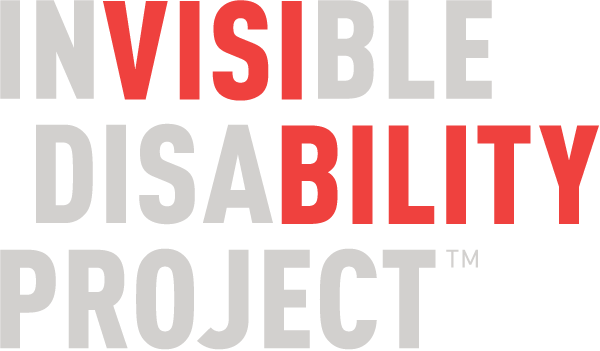Five Ways to Be a Changemaker
Linda Williams, Ph.D., and Monica Slabaugh
l change is unruly and imperfect. When we say “changemaker,” we are talking about the individual who uses the resources native to them to change themselves, and create change in the places and people around them. There are some fundamental ways we can improve our changemaker ways. The Invisible Disability Project came up with five of them.
1. Changemakers must be open to change themselves.
When we are able to change personally, we become a point of change. As a point of change, we are better prepared to engage with the people and spaces around us to activate meaningful, collective change.
Will a rigid world bend to rigid changemakers? We say: a flexible self begets change. Our worldview, our language and our systems are often shaped by rigid boundaries and binaries. Are you disabled or able-bodied? Are you a boy or a girl? Are you normal or are you weird? Change begins in the intimate sphere of the self, and the changemaker sees themselves as a malleable part of the social structure. They see, live in and embody the space between rigid boundaries.
As we work together to end discrimination, stigma and shame around disability, the changemaker comes to the table ready to ask, “What would happen if…” and in turn asks, “But what about…”. When the changemaker considers the unseen forces that shape our culture, they do not merely react against them — they direct them.
2. Changemakers are resourceful.
Instead of getting stuck in all of the things they do not have (like money, time, energy or community), changemakers ask, “What resources do I have?” They find new, creative ways to use the resources native to them for real social change.
Take for example the Coachella Valley Unified School District and their Superintendent, Dr. Darryl Adams. CVUSD, the second poorest school district in the nation, didn’t have student WiFi connectivity. But the desert school system did have school busses and plenty of sunshine. To solve the connectivity problem, the district installed routers and solar panels on all of their busses and then parked them throughout the neighborhoods overnight. The WiFi On Wheels Program was born and student connectivity became possible because changemakers re-imagined the possibilities of their native resources.
3. Changemakers engage in micro-movements.
The changemaker engages on the grassroots level and knows that some social changes can only happen one person at a time. Changemakers know the power of “micro-movements,” or small scale, local efforts that may grow to create larger social change.
Consider this example of a micro-movement from the 1930’s Jim Crow South: Victor H. Green, a postal worker and activist from Harlem, NY, created a motorist guide for African American travelers. The guide, known as The Green Book, was a running list of establishments across the U.S. that were safe, desegregated and welcoming of black people. The Green Book was a collection of powerful voices united by the need to create real social change now, at a time when the slow wheels of the government were still moving towards Civil Rights laws.
4. Changemakers understand the difference between change and innovation.
“Change” and “innovation” are often used interchangeably, but they don’t mean the same thing. Let’s break it down. “Social change” happens when social structures, attitudes, values, norms or beliefs change over time. Consider the LGBTQ movements, which advocate equality and equity for all people at the intersection of sex, gender, gender identity, sexual orientation, ability, race, age and economic background. To shape a culture void of discrimination, the LGBTQ movements are changing the social structures that oppress and marginalize LGBTQ people.
Now, let’s unpack “social innovation.” Social innovation happens when new and better solutions to social problems are created and deployed. Importantly, social innovation benefits the whole society, not just a few individuals. Consider what happens when we innovate within the confines of the language we use. The English language lacks a gender — and sex-neutral pronoun. Instead of accepting a pronoun (like “he” or “she”) that may not fit their needs, people are beginning to use the word “they” (in its singular form) as a way to name themselves. The American Dialect Society even chose the singular “they” as its 2016 Word of the Year.
Words have power; they shape our interpretation of the world and can make us do things, feel things and believe things. When we create new words or find new ways to use old words, we are innovating and creating social change.
5. Changemakers understand the different generations’ readiness and capacity for social change.
Whether they’re talking to a six-year-old or a sixty-year old, the changemaker knows that each generation has a different readiness and capacity for social change. Imagine the family dinner table during the holidays: Baby Boomers, Gen X-ers, Millennials and Gen Z are all gathered around. Each generation brings it all to the table: their unique values and biases, their hopes and fears, their communication style. And it can get uncomfortable, right?
Changemakers know that each generation approaches social change in a unique way, so the changemaker bends to meet people where they are. When we adjust our perspective to account for multiple timelines, we can reach through generations to create social change.






